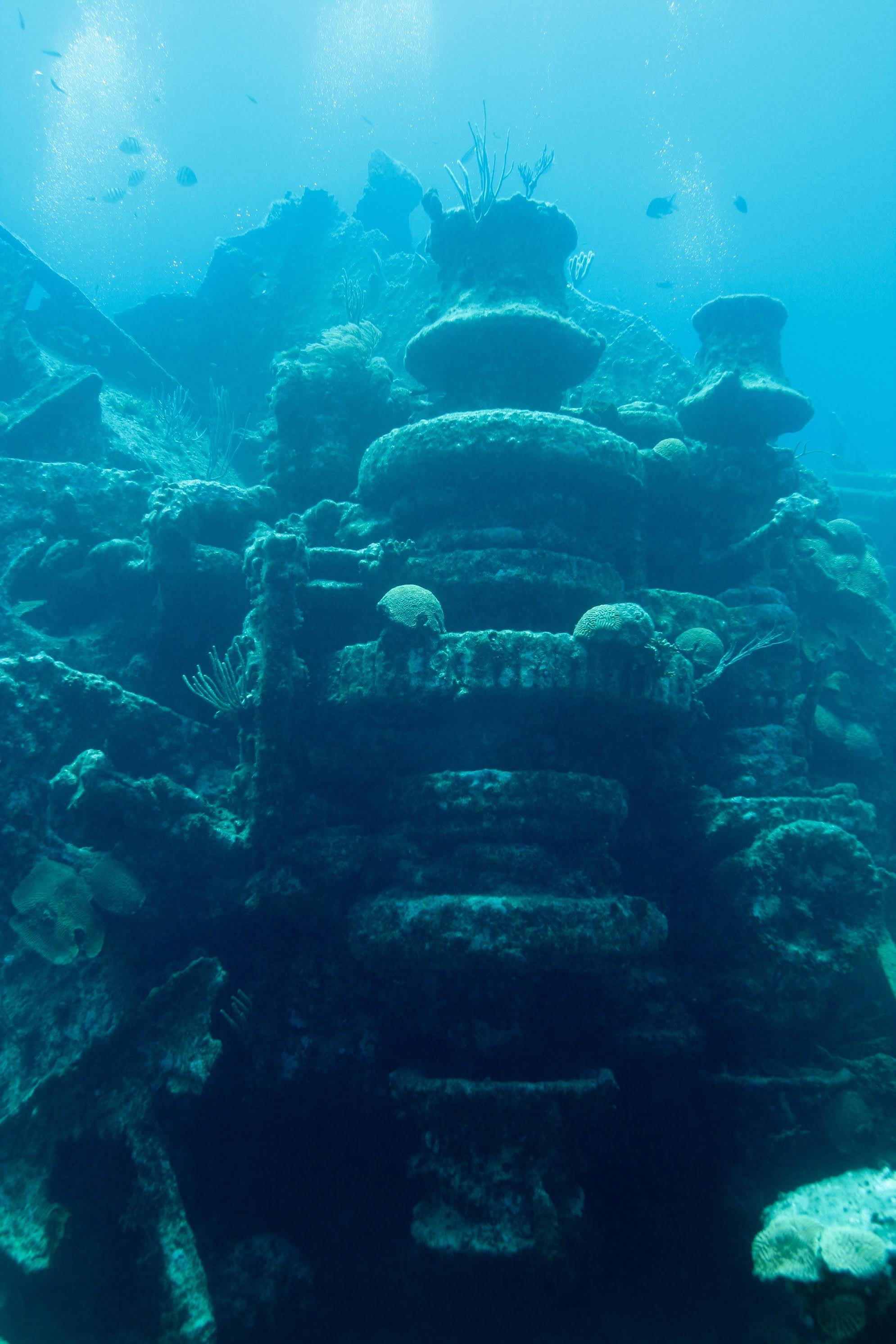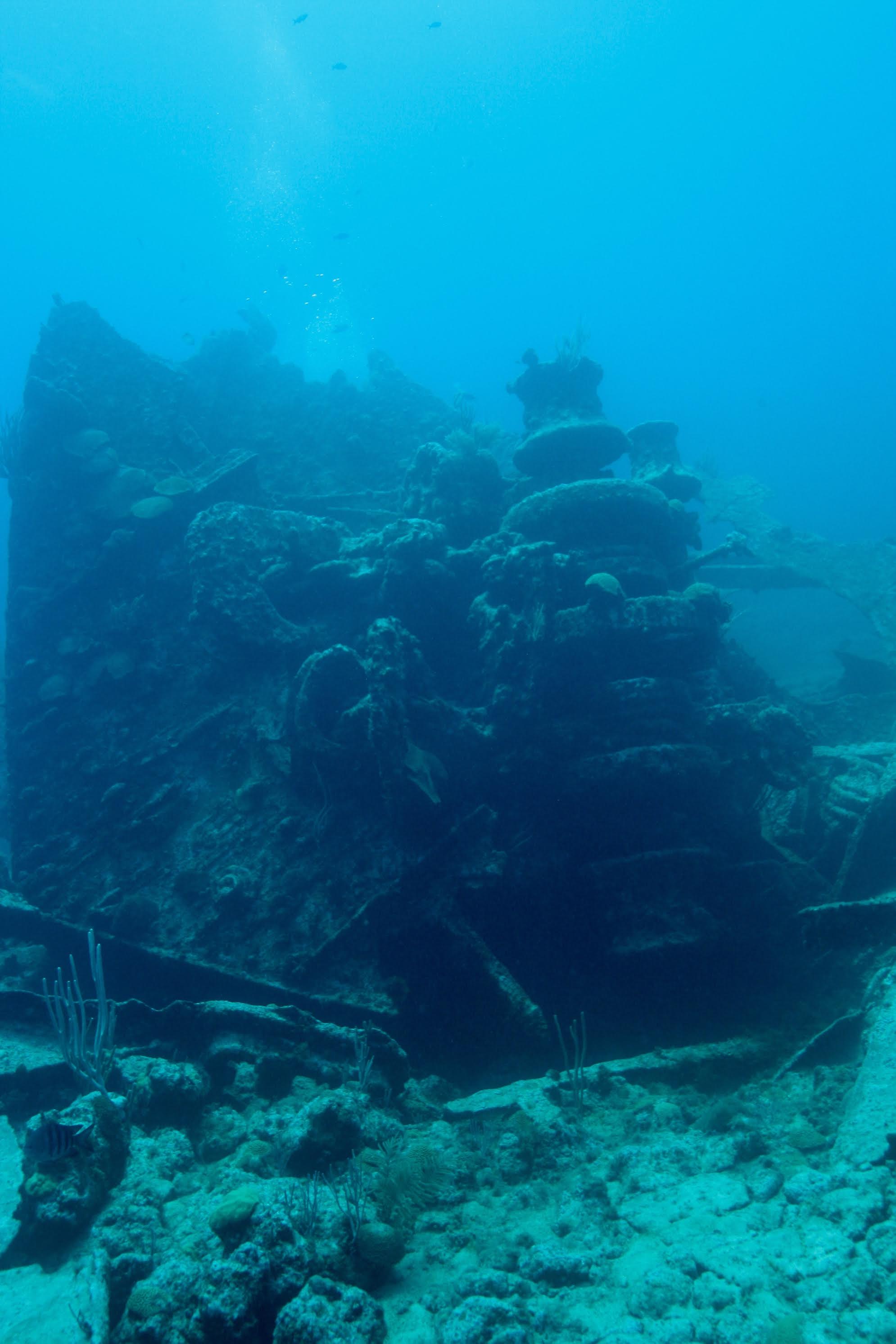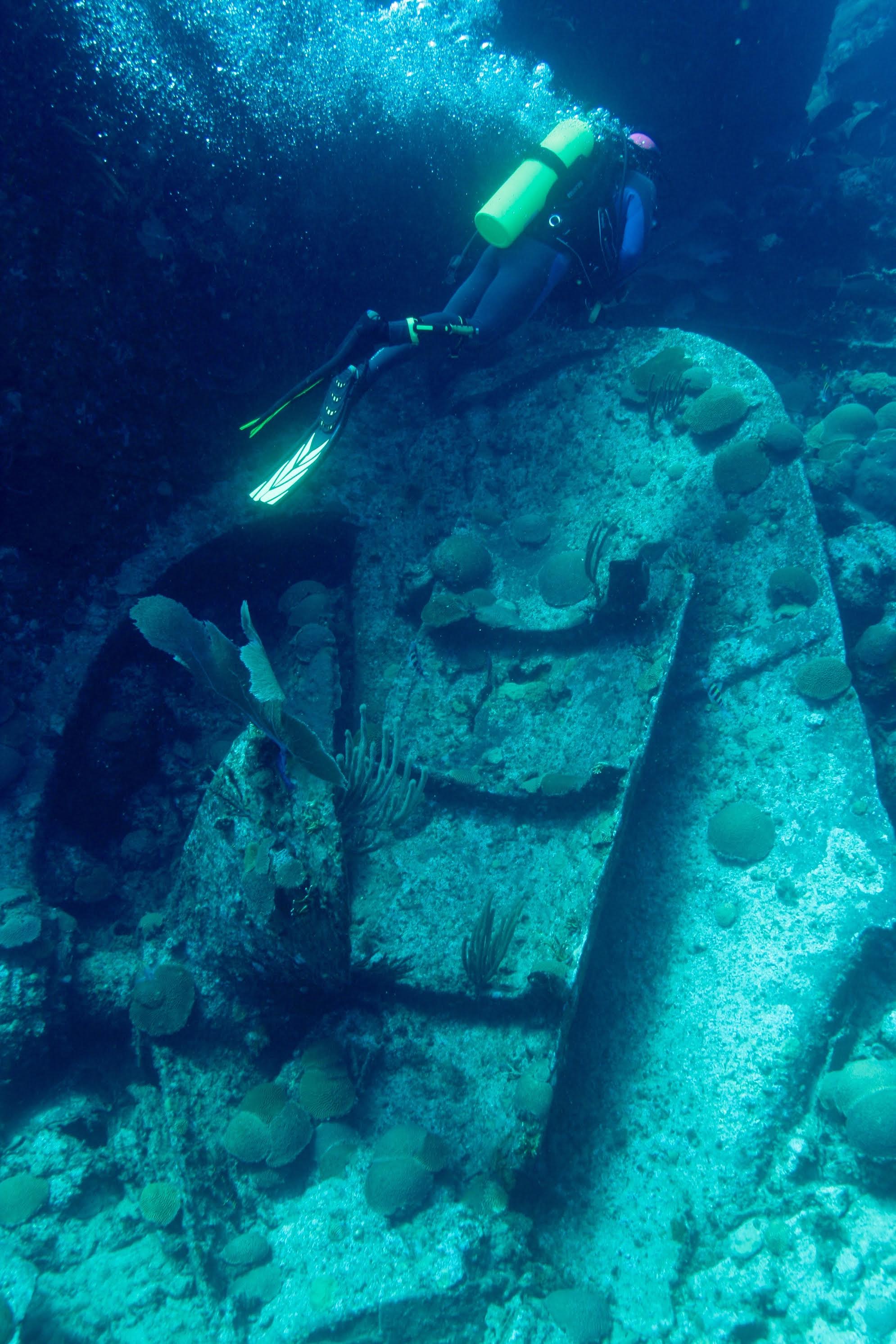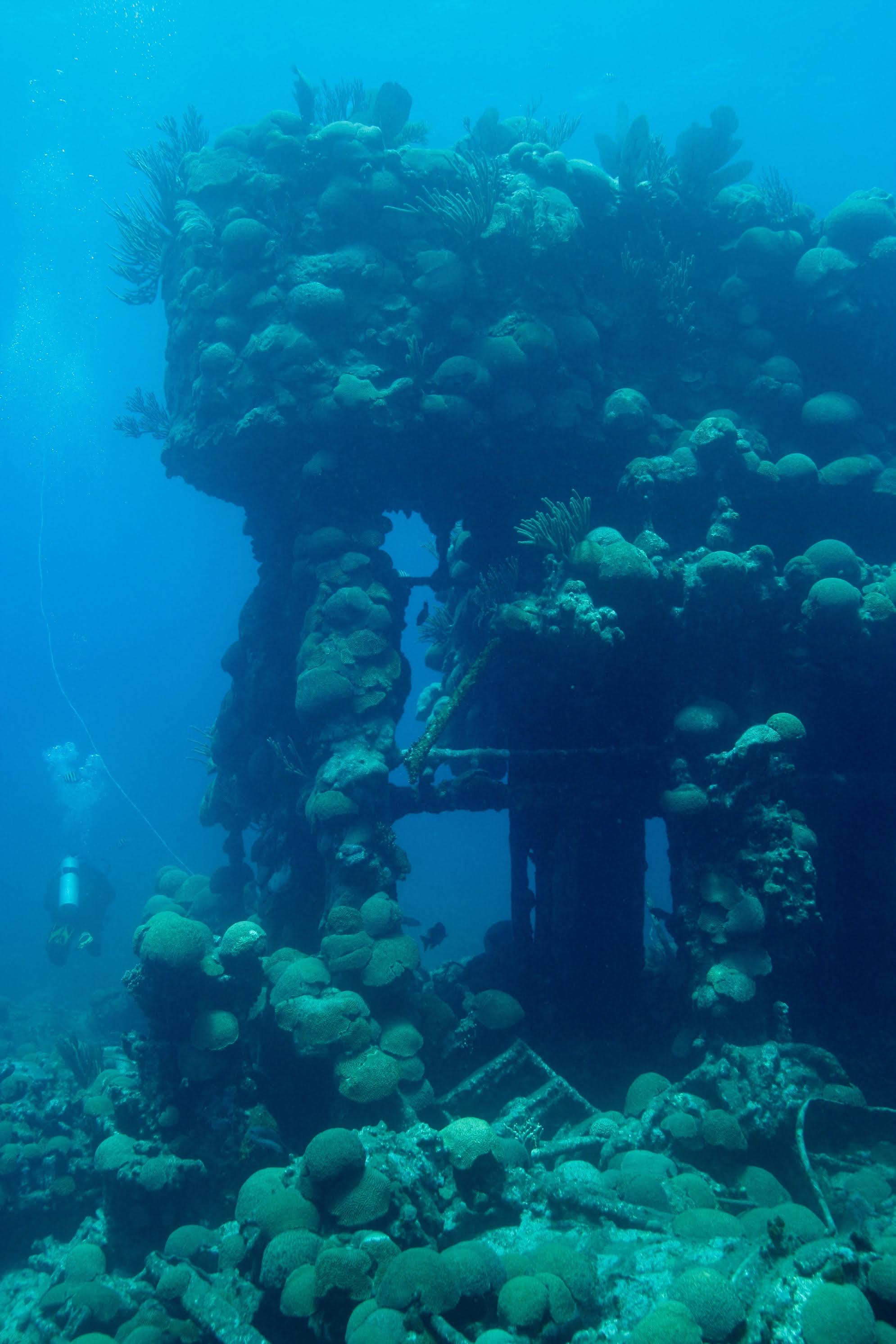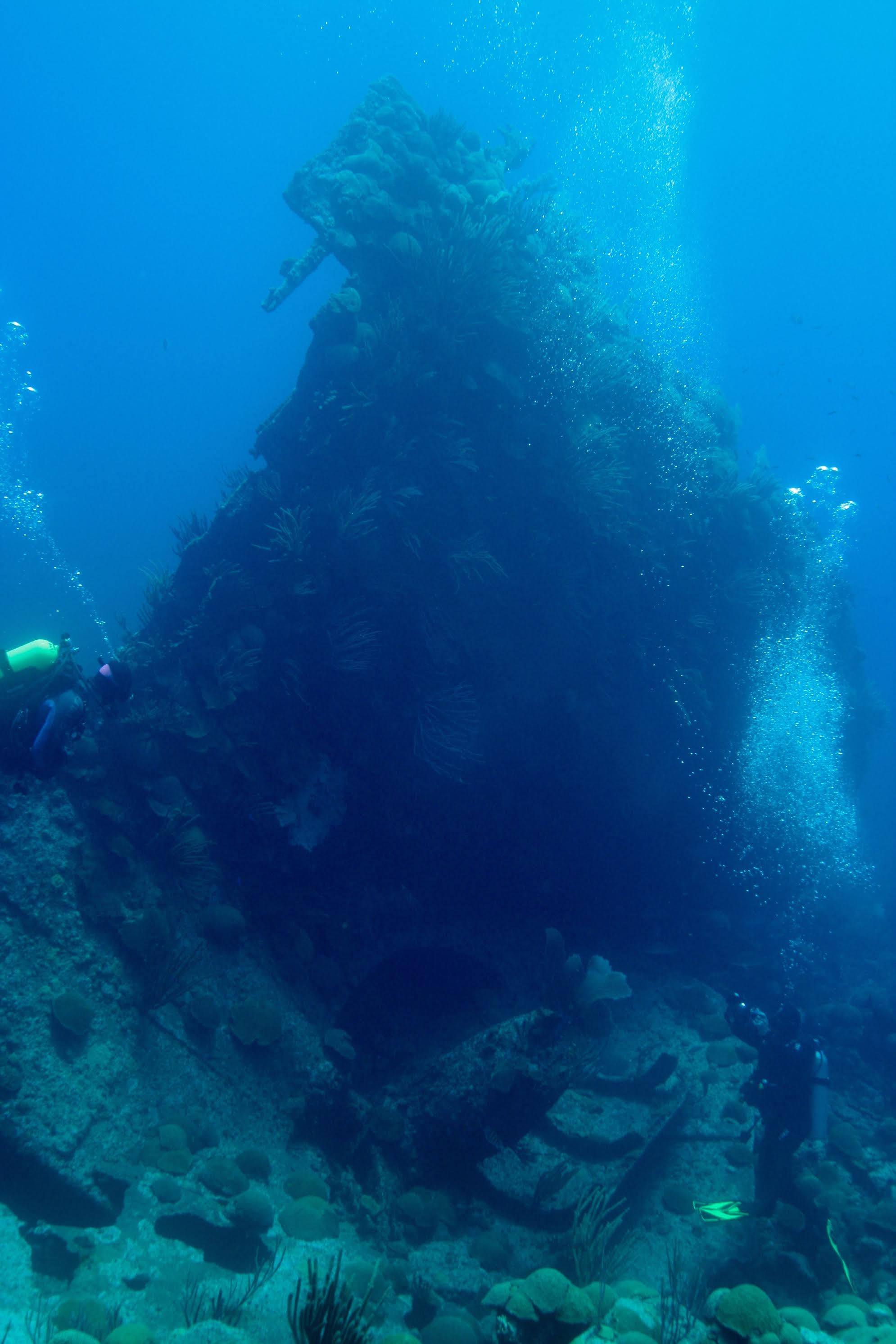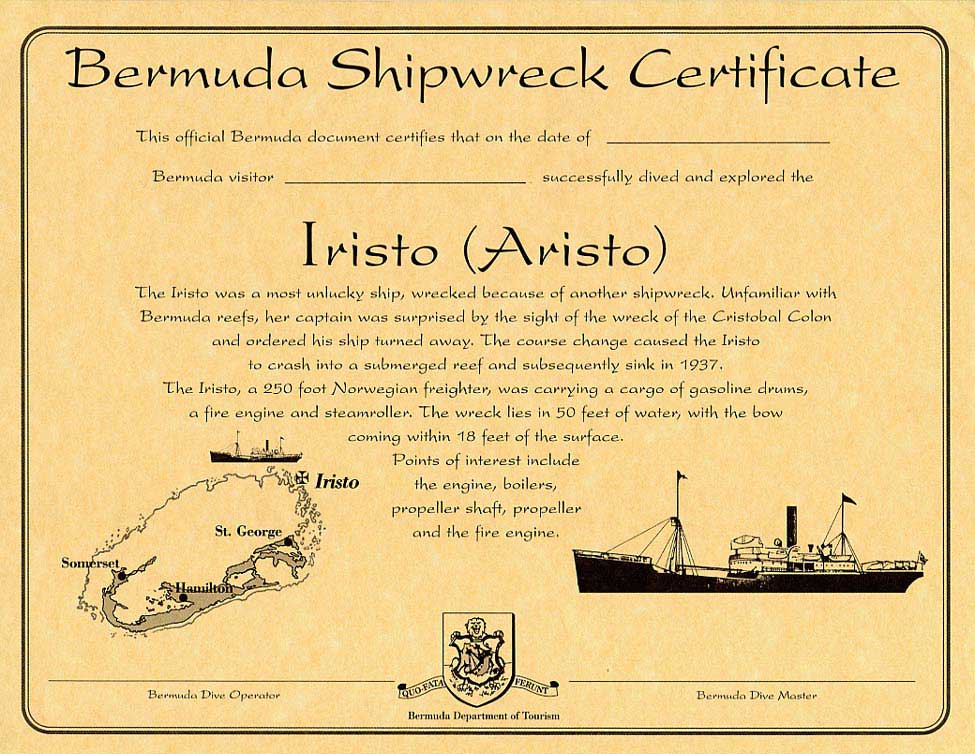Built in 1918 in Lorain, Ohio and originally known as the Lake Jessup, the steam freighter with a 43.5-foot beam changed hands several times under different names, including the War Briar and the Ekstrand. In 1935 a Norwegian company bought the steamer from the International Coal Transportation Corp. and re-named her the Iristo. (She is also locally known as the Aristo, probably due to a misspelling of its name in a New York Times article.)
The Iristo was carrying a cargo of 200 barrels of gasoline, a fire engine and a steam roller en route from Newfoundland to Bermuda in March 1937. Unfamiliar with Bermuda’s reefs, Captain Christian Stephensen seeing the wrecked Cristobal Colon standing out of the water, so he mistakenly believed it was moving through the reefs and gave the order to change course and follow the bigger vessel. In doing so, the vessel hit a submerged reef structure near North Rock. A tug managed to pull her off the reef and start towing her into the port, but the Iristo started taking on water and sank one mile east of the North East Breaker on March 16, 1937. At the board of inquiry, Captain Stephensen was found guilty of negligence by the Marine Board of Inquiry for not carrying any local charts or having enough knowledge of the area (nor of the Cristobal Colon, which had run aground the previous year and been the subject of a worldwide notice to mariners).
CURRENT CONDITION
The freighter’s bow juts to within 18 feet of the surface. The fire engine is still visible although it is heavily disguised by 60 years of heavy coral growth. Most of the ship sits upright in 50 to 55 feet of water, with the bow and stern both intact. Also visible are the engine, two large anchors, boilers, and a propeller shaft. Even parts of the wheels, including tires, are still recognizable in the wreck’s twisted metal remains. The Iristo’s stern stands a good few meters out of the sea bed. Shoals of chub are often sighted, and there is a vast assortment of marine life on display in and around the wreck, including horse-eyed jacks, Bermuda chub and the occasional octopus. The wreck is barely a mile and a half from the Cristobal Colon’s final resting place.
STATISTICS
Location: 32°28'44.40"N, 64°39'26.28"W Visibility: Over 150 feet (45.7 meters) Length: 251 feet (76.5 meters) Depth: 50 feet (15.2 meters) Tonnage: 1,821 tons Protected Area Radius - No Fishing: 300m


